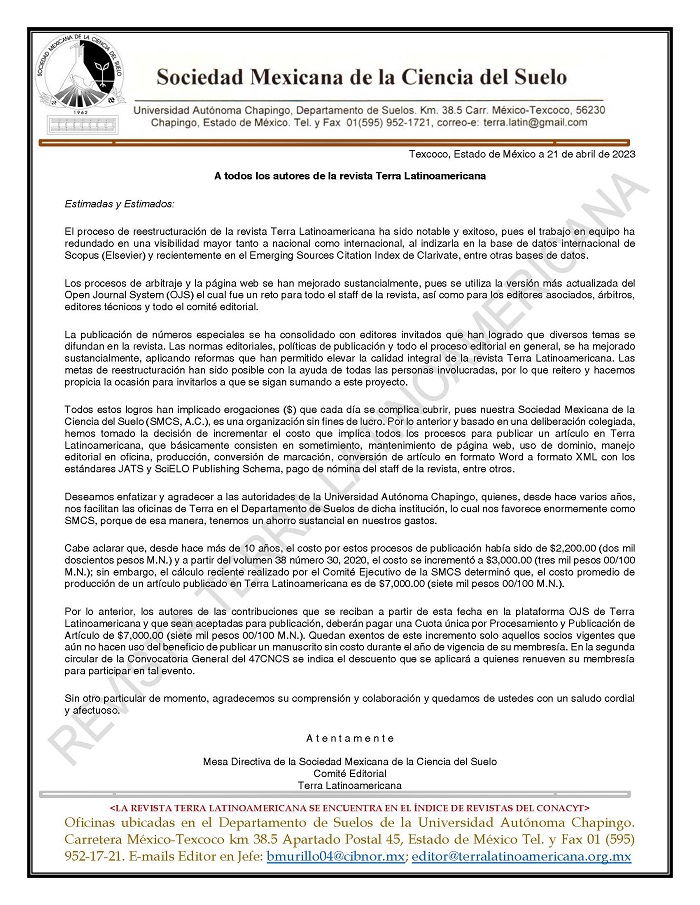Influence of Forest Vegetation on Sediment Retention and Organic Carbon in Check Dams in Durango, Mexico
DOI:
https://doi.org/10.28940/terralatinoamericana.v43i.2064Keywords:
soil conservation, tree cover, soil erosion, quantile regression, water regulationAbstract
Vegetation removal, soil erodibility, and rain erosivity trigger the movement of soil particles and eventually the formation of gullies. To minimize the impacts of soil erosion, conservation and restoration dams are of ten constructed using stone, wood, or other materials aimed at slowing the movement of soil particles and promoting water infiltration. The performance of these dams was evaluated by estimating the volume and weight of retained soil retained in micro-watersheds with pine-oak forests in Durango, Mexico. Soil density and volume data were obtained to determine the weight of the sediments, as well as the volume of trees found in the catchment
area of the check dam. An analysis of variance test with the Monte Carlo permutation
technique was applied to evaluate the ef fectiveness of the dam construction material in retaining sediments, organic matter content, and carbon. Quantile regression analysis was performed to analyze the relationship between sediment weight and tree vegetation. Results indicate no significant dif ferences in sediment retention, but there are dif ferences in the amount of retained organic matter and carbon content according to the type of construction material. Wooden dams were the most ef fective compared to stone dams. The weight of retained soil has an inverse relationship with the volume of trees. Sites with higher tree vegetation density tend to better protect the soil and reduce the amount of sediment deposited in the dams. These results can help develop forest management plans compatible with less soil degradation.
Downloads
Publication Facts
Reviewer profiles N/A
Author statements
- Academic society
- Terra Latinoamericana
- Publisher
- Mexican Society of Soil Science, C.A.

















